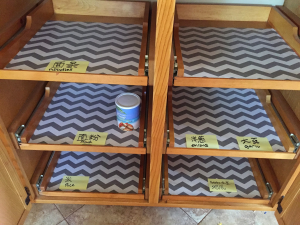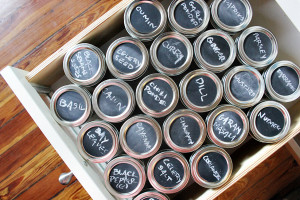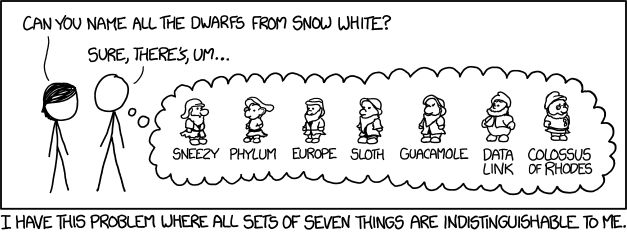How often have you found yourself on an ill-defined site redesign project? You know, the ones that you end up redesigning and restructuring every few years as you add new content. Or perhaps you spin up a new microsite because the new product/solution doesn’t fit in with the current structure, not because you want to create a new experience around it. Maybe your site has vaguely labelled navigation buckets like “More Magic”—which is essentially your junk drawer, your “everything else.”
Your top concerns on such projects are:
- You can’t find anything.
- Your users can’t find anything.
- The navigation isn’t consistent.
- You have too much content.
Your hopeful answer to everything is to rely on an external search engine, not the one that’s on your site. Google will find everything for you.
A typical site redesign project might include refreshing the visual design, considering the best interaction practices, and conducting usability testing. But what’s missing? Creating the taxonomy.
“Taxonomy is just tagging, right? Sharepoint/AEM has it—we’re covered!”
In the coming months, I will be exploring the what, why, and how of taxonomy planning, design, and implementation:
- Building the business case for taxonomy
- Planning a taxonomy
- The many facets of taxonomy
- Card sorting
- Tree testing
- Taxonomy governance
- Best practices of enterprise taxonomies
Are you ready?
ROI of taxonomy
Although the word “taxonomy” is often used interchangeably with tagging, building an enterprise taxonomy means more than tagging content. It’s essentially a knowledge organization system, and its purpose is to enable the user to browse, find, and discover content.
Spending the time on building that taxonomy empowers your site to
- better manage your content at scale,
- allow for meaningful navigation,
- expose long-tail content,
- reuse content assets,
- bridge across subjects, and
- provide more efficient product/brand alignment.
In addition, a sound taxonomy in the long run will improve your content’s findability, support social sharing, and improve your site’s search engine optimization. (Thanks to Mike Atherton’s “Modeling Structured Content” workshop, presented at IA Summit 2013, for outlining the benefits.)
How do you explain taxonomy to get stakeholders on board? No worries, we won’t be going back to high school biology.
Explaining taxonomy
Imagine a household kitchen. How would you organize the spices?
Consider the cooks: In-laws from northern China, mom from Hong Kong, and American-born Grace. I’ve moved four times in the past five years. My husband, son, and I live with my in-laws. I have a mother who still comes over to make her Cantonese herbal soups.
We all speak different languages: English, Mandarin Chinese, and Cantonese Chinese.
I have the unique need of organizing my kitchen for multiple users. For my in-laws, they need to be able to find their star anise, peppercorn, tree ear mushrooms, and sesame oil. My mom needs a space to store her dried figs, dried shiitake mushrooms, dried goji berries, and snow fungus. I need to find a space for dried thyme and rosemary for the “American” food I try to make. Oh, and we all need a consistent place for salt and sugar.
People can organize their kitchen by activity zones: baking, canning, preparing, and cooking. Other ways to organize a kitchen successfully could include:
- attributes (shelf-life, weight, temperature requirements)
- usage (frequency, type of use)
- seasonality (organic, what’s in season, local)
- occasion (hot pot dinners, BBQ parties)
You can also consider organizing by audience such as for the five year old helper. I keep refining how the kitchen is organized each time we move. I have used sticky notes in Chinese and English with my in-laws and my mom as part of a card sorting exercise; I’ve tested the navigation around the kitchen to validate the results.

If this is to be a data-driven taxonomy, I could consider attaching RFID tags to each spice container to track frequency and type of usage for a period of time to obtain some kitchen analytics. On the other hand, I could try guesstimating frequency by looking at the amount of grime or dust collected on the container. How often are we using chicken bouillon and to make what dishes? Does it need to be within easy reach of the stovetop or can it be relegated to a pantry closet three feet away?

Understanding the users and their tasks and needs is a foundation for all things UX. Taxonomy building is not any different. How people think about and use their kitchen brings with it a certain closeness that makes taxonomy concepts easier to grasp.
Who are the users? What are they trying to do? How do they currently tackle this problem? What works and what doesn’t? Watch, observe, and listen to their experience.
Helping the business understand the underlying concepts is one of the challenges I’ve faced with developing a solid taxonomy. We’re not just talking about tagging but breaking down the content by its attributes and metadata as well as by its potential usage and relation to other content. The biggest challenge is building the consensus and understanding around that taxonomy—taxonomy governance—and keeping the system you’ve designed well-seasoned!
Now, back to that site redesign project that you were thinking of: How about starting on that taxonomy? My next post will cover taxonomy planning.


Quite enjoyed this and I’m eagerly looking forward to the next part in the series since the planning stage is where I’m at with my own project at work.
Wow. Excellent article. I need help with my pantry… and the sites and apps I work on need this help too. I am very much looking forward to the rest of this series!!
Great article Grace! I look forward to reading the rest of the series. Taxonomy is so important in redesigning a site as you need to plan and forecast for future content. This sort of planning allows stakeholders to view their site at a long-term, macro-level- something they often fail to do.
Thanks,
RP
Totally agreed. Governance seems to be where things just fall off, especially if you’re the consultant on the project. Getting the stakeholders on board and committed for the long run … well, if the content is largely propelled by having that taxonomy/metadata in place, they’ll soon see the value in making sure their content doesn’t become ROT!
Don’t you dare let us down – don’t make this one of those “in the coming months” blog posts that we never see deliver what was promised – you know the kind, we’ve all written them, myself included. : )
Love this. Go!
Doh! Thanks, Tim and Chad. I’m working on the next one already, just need to push past these work deadlines first. 🙂